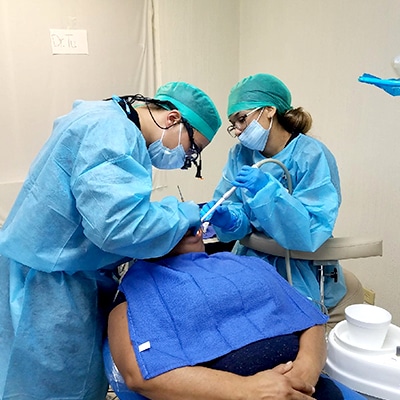
Establishing a daily oral care routine and attending biannual check-ups at Smile Avenue are crucial not just for maintaining a pleasing smile. Neglecting proper brushing, flossing, and overall dental hygiene can lead to the growth of harmful bacteria in your mouth, resulting in issues such as cavities, gum disease, and infections that impact individuals of all ages. While some infections can be avoided with good oral care practices, others are more severe and long-lasting.
Numerous oral infections are common from childhood through adulthood. Understanding eight prevalent oral infections, their symptoms, and when to seek treatment is essential. Just like any other part of your body, your teeth, gums, and tongue can be susceptible to infections and illnesses. While some oral infections are less severe, being aware of these common mouth infections, their causes, and typical signs can aid in their prevention.
1. Dental Caries or Cavities
Dental caries, commonly known as cavities, are holes that develop in your teeth due to tooth decay, making them one of the most prevalent oral infections. According to the National Institute of Dental and Craniofacial Research, dental caries can cause the loss of baby teeth in children. These holes form as a result of bacteria called “Streptococcus mutans,” which thrive on sugary and sticky foods and drinks. Interestingly, carbohydrates, such as chips or rice, also break down into sugar in your body, contributing to the production of acids by the bacteria, thus leading to further decay. Dental caries, caused by “Streptococcus mutans,” is a common oral infection and is a major cause of tooth loss in children aged 12 and under.
2. Hand, Foot, and Mouth Disease
Hand, Foot, and Mouth disease is a viral infection that commonly affects toddlers and school-aged children, as noted by the University of Chicago. It’s usually caused by the virus “Coxsackie A16.” Although it might sound concerning, the infection typically clears up within three days. Initially, there may be a sore throat and fever for a couple of days, followed by the appearance of slightly painful blisters inside the cheeks, on the tongue, palms, soles of the feet, and buttocks.
3. Herpangina
Herpangina, linked to hand, foot, and mouth disease, often impacts children aged 3 to 10, especially during summer and fall. It starts with symptoms like fever, sore throat, and trouble swallowing, similar to hand, foot, and mouth disease. Small blisters appear at the back of the mouth, which can turn into larger ulcers when they break. Luckily, like hand, foot, and mouth disease, herpangina usually resolves within three to five days.
4. Gingivitis
Gingivitis, also known as early gum disease, occurs when bacteria settle in the gums and produce toxins, leading to inflammation and swelling. Common signs include bleeding gums when brushing due to gum sensitivity. Regular flossing and brushing can help remove bacteria and prevent gingivitis. If untreated, gingivitis can progress to more severe periodontal disease. It’s estimated that between 50 and 90 percent of adults may have some form of gingivitis. Fortunately, it can be treated by a dentist.
5. Periodontal Disease
Gingivitis serves as a warning sign indicating the need to improve oral health, as it can progress to periodontal disease. This condition occurs when an oral infection extends below the gumline, affecting the bone and supporting tissues. As gums recede and pockets form, inflammation, and bone loss worsen, potentially leading to loose teeth. According to the Centers for Disease Control (CDC), up to 47.2% of adults aged 30 and older have experienced periodontal disease, the primary cause of adult tooth loss.
When gingivitis advances beneath the gum line, it can damage supporting tissues and bone, resulting in periodontal disease. The formation of pockets around the teeth leads to inflammation and bone loss, eventually causing teeth to become loose. Periodontal disease is the primary cause of tooth loss in adults, affecting 8 to 10 percent of Americans over 18. Moreover, certain bacteria from periodontal disease can be aspirated into the lungs, potentially causing pneumonia or other serious lung conditions.
6. Thrush
Thrush results from an overgrowth of the naturally occurring fungus “Candida albicans.” Medical treatments like antibiotics, chemotherapy, and radiation can trigger outbreaks. Common symptoms include white, curd-like patches on the inner cheeks, tongue, roof of the mouth, and back of the throat. Individuals with HIV are at a higher risk of developing thrush.
7. Canker Sores
Canker sores, also called aphthous ulcers, are bothersome but usually heal on their own within 10-14 days. Their exact cause is uncertain, but common triggers include stress, hormonal changes, immune issues, and food sensitivities.
These lesions occur on the gums and other mouth tissues and are particularly common in children and teenagers. While their origin remains somewhat unclear, factors such as hormones, immune challenges, stress, food sensitivities, and other infections can contribute to their development. Typically, canker sores resolve within 10 days to two weeks.
8. Oral Herpes
Oral herpes is caused by the herpes simplex virus, which is carried by a significant portion of American adults, estimated between 50 and 80 percent. Initial infection may result in blisters and ulcers on the gums and tongue, flu-like symptoms, or no symptoms at all. Once infected, the virus remains in the body permanently, but proper care can help keep it dormant. Recurring outbreaks typically last 10 to 14 days.
It’s crucial to be aware of the symptoms of common oral infections. If you have any concerns or questions, don’t hesitate to contact Smile Avenue and schedule an appointment with Dr. Vuong.









